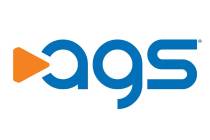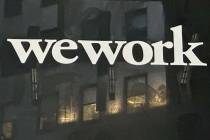Steering clear of ER now at hand
Want to avoid the emergency room?
There's an app for that.
Nevada's two biggest managed-care health insurers have unveiled Web-based initiatives to steer customers away from emergency rooms and toward quick-care centers and drugstore health clinics for routine problems such as strep throat, rashes and ankle sprains.
Anthem Blue Cross Blue Shield, the state's No. 2 insurer with 250,000 members, launched its ER education program in late July to help members search the Web for nonemergent care centers. The program follows UnitedHealth Group's September rollout of its upgraded DocGPS, a clinic-search application for BlackBerrys, Android-based phones and iPhones. UnitedHealth, the state's largest insurer, covers roughly 600,000 Nevadans.
The idea of the programs is to save insurers and patients alike on treatment costs and to relieve emergency rooms overburdened with people who don't face life-and-death medical problems.
"It's always bewildered me that people come into the ER at 2 in the afternoon for something like a sore throat," said Dr. Manish Oza, a Blue Cross Blue Shield medical director based in Maryland and a designer of the company's ER education initiative. "Managed care has done a suboptimal job in educating, empowering and informing members about ER alternatives. Members were confused about when they should be going to the ER, or when a retail clinic or urgent-care center is an option."
UnitedHealth officials weren't available to comment before press time, but Dawn Owens, an executive who helped develop DocGPS, said in a September statement that it was "critical that we continually improve and innovate with technologies that increase consumers' access to high-quality, affordable health care."
The initiatives could affect a substantial number of patients. A 2010 study by the California-based research company RAND Corp. found that 17 percent of all ER visits nationwide could have been handled through quick-care centers or minute clinics in drug and grocery stores. Shifting that business away from ERs would save the country's health care system $4.4 billion.
Moving the sort-of-sick out of ERs would also cut costs for insurers and their customers.
ERs that contract with Blue Cross Blue Shield in Nevada charge an average of nearly $550 to treat strep throat. Quick-care centers charge just under $50 to treat strep, while retail health clinics bill $16. Patient expenses are lower, too: ER copays range from $150 to $300, compared with $10 to $75 at quick-care and retail clinics.
Avoiding the ER offers time savings as well. Nevada has the nation's 14th longest ER waits, with an average of 262 minutes, according to the 2010 Emergency Department Pulse Report from Indiana health care consulting firm Press Ganey Associates.
There aren't solid numbers on wait times at quick-care and retail centers, but anecdotally, they don't come close to the 4.5-hour average in Nevada ERs, Oza said.
"ERs don't have beds, and when there aren't beds, that creates a logjam," he said. "Everybody is impacted when a (patient) goes to the ER for something that could be treated somewhere else."
Anthem's education campaign also tells members when they need to seek medical attention at the closest ER.
"We don't want someone with chest pains looking through a brochure or trying to Google urgent-care centers," Oza said.
Likewise, if a member faints or has severe shortness of breath, a high fever with a stiff neck, a major cut that won't stop bleeding, a severely broken bone or stroke symptoms including numbness or difficulty speaking, Anthem docs want the patient to head to the ER, Oza said.
But if the problem is a routine ear infection, a minor cut, conjunctivitis or bruising, Anthem would rather patients visit a quick-care clinic.
Here's how the programs work.
Anthem members go to Google, Yahoo or Bing and type "Anthem and urgent care" into the search engine. The company's search site will pop up. Patients can type in their address, and the nearest centers will come up, along with phone numbers and distances from home. Insureds can also call the 24-7 NurseLine on their member ID card for directions to the nearest quick-care center, or for guidance on whether they need to go to the ER.
Anthem members who visit the ER for a non-emergency problem receive automated follow-up phone calls reminding them of are other options for care and offering details on alternatives via phone or e-mail.
UnitedHealth's DocGPS app allows members to search for urgent-care centers on their smart phones. The results show a center's location on a map, give detailed driving directions and let the user call the center.
Members can download the free DocGPS app through iTunes or AppBrain.
Oza said Anthem is looking at creating iPhone and Android apps for its education plan. People ages 20 to 42 are likeliest to visit ERs for non-emergency cases, and they're most comfortable using technology to find alternatives, he said.
Anthem is also considering posting a YouTube video and launching a Facebook page on the program.
"Ultimately, it's the members' decision if they want to go to the ER, but we want to show them options, and to get that information out there so people can access it easily," he said.
Contact reporter Jennifer Robison at
jrobison@reviewjournal.com or 702-380-4512.























